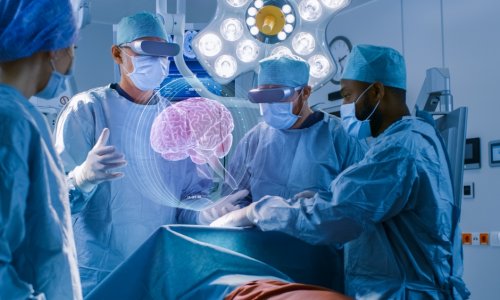RSNA 2010
Report: Kerry Heacox, i.t. Communications
A double-edged sword would be a good analogy for diagnostic imaging in 2010. New ways to utilise imaging technologies are being developed, imaging equipment is doing more, faster than ever, and image processing software is increasingly innovative. Today's radiology exams are ‘slicing’ through the body to reveal anatomy with increasing clarity for better diagnoses and therapeutic treatment planning. Yet radiation also remains harmful -- delivering high levels of radiation dose exposure cumulatively can cause injury and death.

RSNA 2010 reflects this. Its theme -- Personalised medicine - in pursuit of excellence -- focuses on recent innovations to customise radiology studies and therapeutic radiotherapy to accommodate the individual clinical needs of a patient, and to use both well established and evolving technologies in innovative ways.
Kicking off the week-long programme of more than 4,200 scientific papers, posters and educational courses, the Sunday opening lectures focus on the ability of oncologic imaging to identify cancer and facilitate personalised cancer treatment.
RSNA President Dr Hedvig Hricak MD PhD, Chairman of the Department of Radiology at New York's Memorial Sloan-Kettering Cancer Centre, will discuss the challenges and opportunities of the rapidly emerging fields of biomedical and molecular imaging. Professor Sanjiv S Gambhir MD PhD, of Stanford School of Medicine, California, will present the esteemed Pendergrass New Horizons Lecture on strategies for the earlier detection of cancer.
This annual Chicago gathering of an estimated 50,000+ radiologists, radiology professionals, consultants, and industry vendor representatives is also emphasising the pragmatic this year. Concern about radiation dose exposure, particularly from CT scans, is a dominant topic in meeting sessions. The RSNA's new campaign, Image Wisely, which focuses on ordering CT exams only when they are needed, and optimising radiation dose protocols to the lowest diagnostically acceptable levels, will be launched. Emphasis on patient safety is paramount.
Healthcare reform, through the adoption of electronic medical records and best-practice standards from evidence-based medicine, is a dominant topic for the meeting. While many sessions have a US-based federal healthcare policy perspective, they are intent on reducing costs and optimising medical resources for any healthcare organisation in an era of global economic recession. Dr Atal Gawande, associate professor of surgery at Harvard Medical School, and MacArthur Award recipient for his books and articles, is presenting the special lecture on reform and the complexity of healthcare.
Methods of using a wide variety of IT tools and technologies designed to better share information, to improve communication between radiologists and radiation oncologists with other clinicians, and to increase efficiency, especially with respect to reporting test results, also will dominate RSNA 2010.
From an RSNA meeting perspective PACS has lost its glamour – although not utility. Now that hospitals have millions of digital images and reports in archives, data mining research has become feasible and efficient. PACS has become pragmatic, a just beginning-to-be-tapped encyclopaedia for researchers, with the potential to add applied clinical knowledge that could only be speculated about in the era of X-ray film files. Additionally, mobile technology that can display imaging is not being ignored either. Additionally, there will be an update on the expanding library of RSNA best-practice templates for radiology reporting.
Following a longstanding ECR tradition, radiology in China and in Latin America will have special sessions: China Presents and Latin America Presents. The China sessions will address the latest applications of MRI, as well as a radiology study of SARS in China. The Latin American session will begin with an overview of radiology in this region, exploring collaborations with RSNA, the role of imaging in diseases endemic to the region, and conclude with presentations of Latin American radiologic innovations currently being developed.
Finally, in a ‘first’ for RSNA, former US President Bill Clinton will speak to registered professional attendees only, no media allowed. Is this a new trend to invite the famous and influential? Who knows! However, tickets to hear President Clinton's hour-long lecture ‘sold out’ almost as soon as they became available.
11.11.2010











